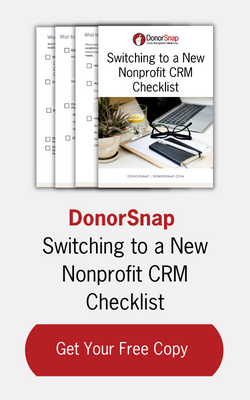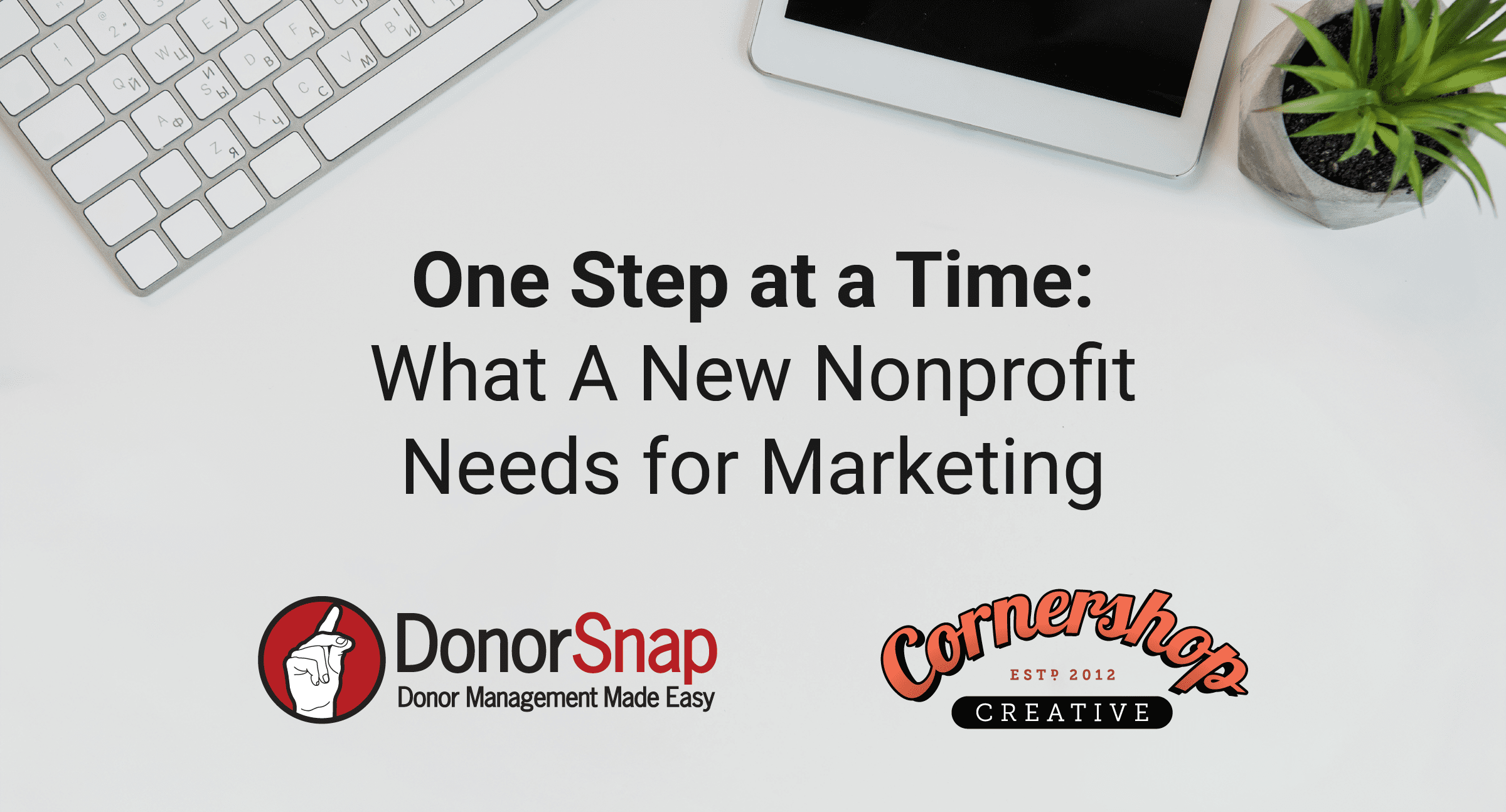Are you familiar with the law of the 5 Ps? Proper preparation prevents poor performance. More than just an alliteration, this principle is pertinent to successful fundraising. The concept behind it is self-explanatory, but the idea is that your success, or lack thereof, will rely mostly on how well you prepared, not just your skills or message. This is where a fundraising plan comes into play.
Nonprofit organizations that rely on a clear fundraising plan are more likely to stay focused, reach their goals, and make a bigger impact in their communities.
Keep reading to discover best practices for a fundraising plan and how DonorSnap can help.
What Is a Fundraising Plan?
A fundraising plan is a document that details a nonprofit’s outreach efforts in a timeframe for a specific campaign goal. Nonprofits can organize them to best fit their needs but they should outline key details like events, email/print campaigns, social media messages, and anything else a nonprofit will use to convey its message and rally support. The best way to organize it is by date, activity, objective, and role (who is responsible).
Short-Term vs Long-Term Planning
Most nonprofits will have a yearly fundraising plan that outlines their communications for the year ahead. However, this should fit into a larger long-term plan, that looks further, often 5-10 years. Many refer to these as strategic plans.
- Short-term plans are typically created annually or quarterly. They help guide your fundraising efforts in the immediate future, such as this year’s giving campaign or upcoming events.
- Long-term plans provide direction over several years. They support your organization’s broader goals and help you plan for sustainability, growth, and capacity building. These are often called Strategic Plans.
By balancing both, your organization can stay agile while still building toward long-lasting results.
Benefits of a Fundraising Plan
A fundraising plan offers more than just structure. It provides a clear vision and serves as a foundational tool for building consistency, growth, and trust within your organization. Here’s how a solid fundraising plan benefits both your internal team and your external supporters:
Keeps Your Team Aligned
When everyone knows the fundraising goals and the steps to get there, your team can work in harmony. A fundraising plan helps each department or individual understand how their role contributes to the bigger picture. This clarity fosters collaboration and reduces duplicate efforts. For example, if marketing knows when a campaign is launching, they can prepare assets ahead of time, while program staff can help tell the impact story. Everyone rows in the same direction.
Increases Accountability
A plan adds structure that defines who is responsible for each piece and benchmarks to your fundraising efforts. Instead of reacting to funding needs or scrambling at the end of the fiscal year, your team works toward predefined goals with measurable checkpoints. If something isn’t working, it becomes easier to identify the issue and adjust the strategy. This accountability builds a culture of ownership and continuous improvement within your organization.
Boosts Staff and Volunteer Morale
Reaching goals isn’t just good for your programs—it’s also great for your people. When staff and volunteers see the results of their work, it creates momentum and pride. Having a roadmap to follow gives them direction and purpose. And when goals are met, it gives the team something to celebrate, reinforcing their commitment to the mission and encouraging them to push forward.
Builds Donor Trust
Donors want to know that their contributions are being used wisely. A clear, intentional fundraising plan shows that your organization is not only organized, but strategic and forward-thinking. When you can clearly explain how you plan to raise funds, where that money will go, and what impact it will create, donors are more likely to give—and to give again.
Improves Efficiency
Planning reduces guesswork. With a fundraising plan in place, you don’t have to spend valuable time figuring out what to do next. You’ve already prioritized the work that matters most. This allows your team to act with confidence and focus, ultimately saving time and resources. It also makes onboarding new staff or volunteers easier, since they can quickly see how your fundraising efforts are structured.
For many organizations, especially those with limited internal capacity, this is also where seeking outside expertise can be helpful. For example, professional grant writing services for nonprofit organizations can support your team in securing long-term funding and communicating your impact clearly to donors.
Strengthens Long-Term Impact
When your fundraising efforts are connected to long-term goals, you’re building more than just this year’s budget—you’re building your future. A good plan allows you to identify what’s working and invest in it. It also prepares your organization to weather unexpected challenges or take advantage of new opportunities. With a clear direction, you can scale successful initiatives, plan for growth, and ensure your mission continues to thrive for years to come.
Nonprofit Fundraising Plan Best Practices + How DonorSnap Helps
A successful fundraising plan keeps your efforts organized and good data management plays a critical role in making that happen. When your donor and campaign data is clean, accurate, and easy to access, your plan becomes a powerful decision-making tool. Tools like DonorSnap can help nonprofits manage their data and build fundraising plans based on accurate information. Below are the core components of a fundraising plan with tips on how DonorSnap helps.
1. Set Clear Goals
Start by defining what you want to achieve and why. Your goals should be specific, measurable, and aligned with your mission. Your fundraising plan might have a mix of different goals and provide a clear outline how to reach them. For example, “Grow online giving by 10% by targeting younger donors across social media.” How DonorSnap Helps: DonorSnap’s goals app allows you to set and visually track your progress in real time. You can create custom goals for campaigns, appeals, donor retention, new donor acquisition, and more. Each goal is fully customizable, giving you a quick and clear snapshot of your fundraising performance.
2. Use Your Donor Data
A good fundraising plan should be built based on your donor data. It is important to look at your nonprofit data to form realistic projections and to set goals that aim for growth without being out of reach.
How Good Data Management Helps: Having clean, well-organized data lets you look back at past campaigns, donor engagement, and giving trends to guide your decisions. If your data is messy or inconsistent, you may miss key insights or misallocate resources. Want to learn more about keeping your data clean and useful? Read How to Keep Your Nonprofit Data Clean and Organized here.
3. Collaborate as a Team
Fundraising is a team effort. From writing appeals to managing events, everyone needs to know what’s expected of them. Your fundraising plan should assign roles for each initiative. DonorSnap makes it easy for teams to collaborate.
How DonorSnap Helps Nonprofit CRMs like DonorSnap help teams stay aligned and organized. Users can quickly add a note to a record and tag a team member for review. There is also the Tickler tab which can set up helpful reminders for your team. Learn more about how DonorSnap helps teams collaborate here.
4. Track and Adjust
No plan is perfect from day one. The key to long-term success is staying flexible and making adjustments based on what’s working and what’s not. Keeping track of your fundraising success throughout the year ensures goals are met.
How DonorSnap Helps: With powerful reporting tools, DonorSnap gives you real-time access to the data you need to evaluate performance. Whether you’re reviewing donor retention, campaign success, or engagement trends, you’ll have the information to make informed decisions quickly. Built-in dashboards and customizable reports help you monitor your KPIs, spot issues early, and course-correct before goals are missed.
Final Thoughts
Proper preparation truly prevents poor performance. A well-thought-out fundraising plan helps your organization stay focused, adapt to change, and meet your goals with confidence. If you haven’t created a formal plan yet, now is a great time to start. Begin with your goals, get your team involved, and keep it simple at first. The most important thing is to get started and treat your plan as a living document that evolves with your organization.




